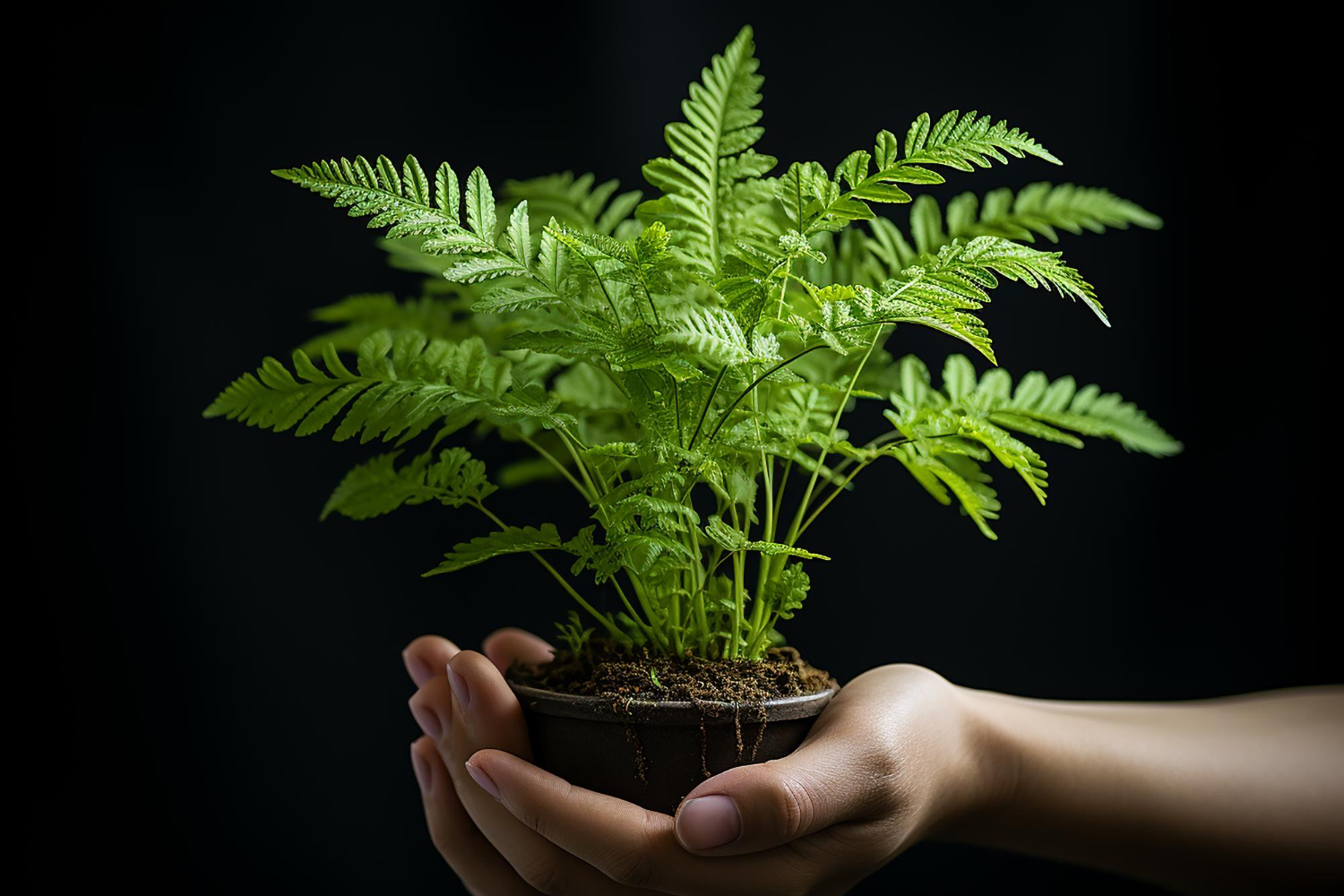Fern plants have existed for millions of years, making them one of the oldest plant groups on Earth. These fascinating plants contributed significantly to the formation of coal deposits during the Carboniferous period. Fern plants thrive in a variety of habitats, from tropical rainforests to temperate woodlands and even arid deserts. They provide numerous benefits, including improving air quality, supporting biodiversity, and adding natural beauty to any space.
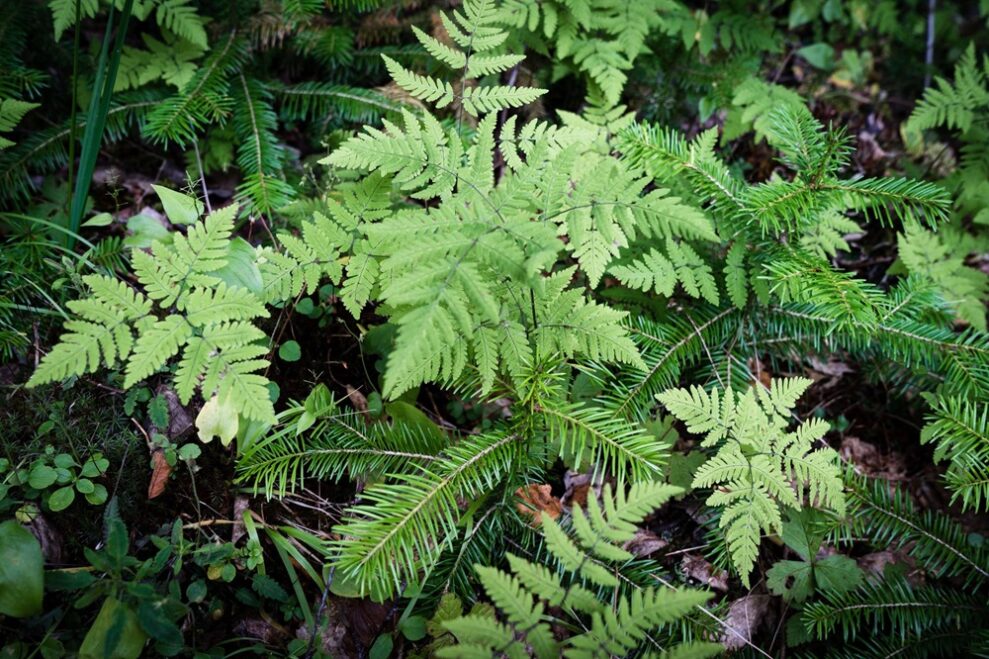
Types of Fern Plants
- Tropical ferns: These ferns thrive in warm and humid environments. They’re ideal for indoor gardening and greenhouse cultivation.
- Hardy ferns: These resilient plants can tolerate colder temperatures and are well-suited for outdoor gardens in temperate climates.
- Epiphytic ferns: Unlike most ferns, these species grow on other plants, trees, or rocks without causing any harm to their hosts.
Growing Fern Plants
Growing ferns can be a rewarding experience, as these ancient plants bring a sense of tranquility and beauty to any space. To successfully grow fern plants, it’s essential to understand their specific needs and create an environment that mimics their natural habitat.

Ideal conditions for growth
- Light requirements: Ferns generally prefer indirect light, with a few species tolerating direct sunlight. Too much sunlight can cause scorched fronds. Place your ferns near a window with filtered light or in a spot with dappled shade outdoors.
- Temperature and humidity: Most ferns thrive in temperatures between 65°F and 75°F, with humidity levels between 50% and 70%. Humidity can be maintained using a humidifier, a pebble tray filled with water, or by misting the ferns regularly. For outdoor ferns, choose hardy species that can tolerate the temperature fluctuations in your region.
- Soil composition: Ferns require well-draining, nutrient-rich soil. A mixture of peat moss, perlite, and compost works well for most species. Some ferns, like epiphytic varieties, may need specialized potting mixes that mimic their natural growing environment.
Propagation methods
- Spore propagation: Ferns produce tiny spores on the underside of their fronds. Collect these spores, sow them on a moist, sterile medium, and keep the container covered to maintain humidity. Once the young ferns are large enough, transplant them into individual pots. Spore propagation can be a slow process, taking several months to produce mature plants.
- Division propagation: Many ferns can be propagated by dividing the plant into smaller sections. Gently separate the root ball into smaller pieces, ensuring each division has healthy roots and fronds. Plant each division in a pot filled with suitable soil. This method is faster than spore propagation and can be done during the fern’s dormant season.
Potting and repotting
Choose a pot with drainage holes to prevent waterlogging. Fern plants typically have shallow roots, so a wide, shallow container is ideal. Repot your ferns every 1-2 years, or when you notice roots emerging from the drainage holes. When repotting, choose a container that is 1-2 inches larger in diameter to give the roots room to grow. Be gentle during the repotting process, as ferns have delicate root systems that can be easily damaged.
Acclimatizing ferns to a new environment
When introducing ferns to a new space, it’s essential to acclimate them gradually. Sudden changes in light, temperature, or humidity can stress the plant, leading to problems such as leaf drop or stunted growth. Introduce your fern to its new environment gradually by placing it in a slightly shaded area and slowly moving it to its final location over a week or two.
By understanding the specific needs of ferns and providing the right growing conditions, you can cultivate these beautiful plants and enjoy their lush, green foliage in your indoor or outdoor spaces.
Fern Plants Care
Providing proper care for your fern plants is crucial to ensure their health and longevity. By understanding their specific needs and adjusting your care routine accordingly, you can enjoy the beauty and tranquility these ancient plants bring to your space.
-
Watering requirements
Ferns typically need consistent moisture to thrive. Water your ferns when the top inch of soil feels dry to the touch, ensuring the soil remains evenly moist but never waterlogged. The frequency depends on the specific fern species, the size of the pot, and the environmental conditions, such as temperature and humidity. Overwatering can lead to root rot, while underwatering can cause the fronds to turn brown and crispy. To help maintain consistent moisture, consider using a self-watering pot or a drip irrigation system. -
Fertilizing
Ferns generally have moderate nutrient requirements. Fertilize ferns with a balanced, water-soluble fertilizer diluted to half strength every 4-6 weeks during the growing season. Avoid over-fertilizing, as it can lead to scorched fronds, weak growth, and even root burn. For a more organic approach, you can use compost, worm castings, or fish emulsion as an alternative to synthetic fertilizers. -
Pruning and grooming
Regular pruning and grooming help maintain a tidy appearance, encourage healthy growth, and prevent diseases. Remove dead or damaged fronds by cutting them off at the base using clean, sharp scissors or pruning shears. Pruning also allows for better air circulation around the plant, reducing the risk of fungal infections. If your fern plants becomes too large for its space, you can trim the outer fronds to control its size, but avoid removing too many fronds at once, as this can stress the plant. -
Pest management
Ferns can be susceptible to pests such as aphids, spider mites, mealybugs, and scale insects. Monitor your plants regularly for signs of infestation, and treat any issues promptly to prevent further damage. Treat infestations with insecticidal soap, neem oil, or horticultural oil, following the label instructions for application rates and frequency. Maintaining good air circulation, proper watering practices and regular grooming can help prevent pests and diseases. -
Managing humidity and air circulation
Ferns generally thrive in environments with high humidity levels. To maintain adequate humidity, mist your ferns regularly, place a tray of water and pebbles near the plant, or use a humidifier. Ensure there is enough air circulation around your ferns, as stagnant air can lead to fungal issues. For indoor ferns, consider using a small fan to promote air movement. For outdoor ferns, avoid planting them too close together and provide enough space for air circulation. -
Overwintering ferns
For outdoor ferns in cold climates, some hardy species will naturally go dormant during the winter months, with fronds dying back and regrowing in the spring. To protect these ferns during the winter, apply a layer of mulch around the base of the plant to insulate the roots. If you’re growing tender fern species outdoors, consider moving them indoors or to a greenhouse before the first frost to protect them from extreme cold.
By providing proper care and promptly addressing any issues that arise, you can ensure your ferns remain healthy and vibrant, gracing your indoor or outdoor spaces with their lush, green foliage.
Decorating with Ferns
Ferns are versatile and visually appealing plants that can transform your indoor and outdoor spaces into lush, calming retreats. With their variety of textures, shapes, and sizes, ferns can be incorporated into various design styles, from modern minimalist to tropical jungle.
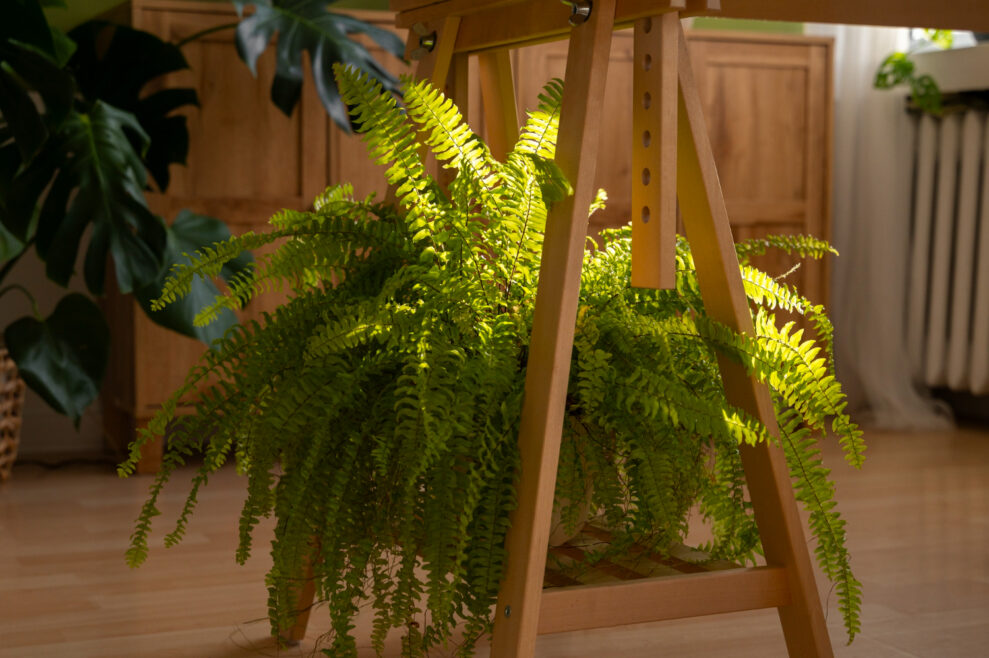
-
Creating a fern-inspired indoor oasis
- Grouping ferns: Arrange multiple fern varieties together to create a visually interesting display. Place them on shelves, windowsills, or tabletops to create layers of greenery that draw the eye and add depth to your space.
- Hanging ferns: Utilize vertical space by hanging ferns in baskets, wall-mounted planters, or floating shelves. This is especially effective for ferns with trailing fronds, such as the Boston fern or the rabbit’s foot fern.
- Terrariums: Small fern species, such as the button fern or the maidenhair fern, can be grown in terrariums or glass cloches. This provides a controlled environment with adequate humidity and creates a captivating focal point in your space.
- Bathroom ferns: Transform your bathroom into a spa-like sanctuary by incorporating humidity-loving ferns, such as the bird’s nest fern or the staghorn fern. Place them near a window or on a ledge, or mount them on the wall to create a living piece of art.
-
Incorporating ferns into outdoor spaces
- Shade gardens: Ferns are perfect for adding texture and visual interest to shady garden areas. Plant them alongside other shade-loving plants, such as hostas, astilbes, and heucheras, to create a lush, layered garden that thrives in dappled sunlight.
- Woodland landscapes: Embrace the natural beauty of ferns by integrating them into woodland-inspired landscapes. Plant various fern species among trees, shrubs, and moss-covered rocks to create a serene, forest-like environment.
- Water features: Ferns are an excellent choice for planting near ponds, streams, or waterfalls, as they appreciate the increased humidity and the calming ambiance that water features provide.
- Borders and edging: Use ferns to create soft, natural borders along pathways, garden beds, or property lines. Combine different fern species and heights to create a visually dynamic and flowing border.
- Container gardening: Ferns can thrive in containers, allowing you to incorporate them into patios, balconies, or decks. Combine ferns with other shade-loving plants, or create a mixed arrangement of various fern species for a stunning container garden display.
By thoughtfully incorporating ferns into your indoor and outdoor spaces, you can create a soothing, verdant atmosphere that showcases the unique beauty and charm of these ancient plants.
Common Fern Varieties and Their Care
There are numerous fern species, each with its unique appearance and care requirements. Here are some popular fern varieties and tips for their successful cultivation:
-
Boston Fern (Nephrolepis exaltata)
The Boston fern, known for its arching, feathery fronds, is a popular indoor plant. It thrives in bright, indirect light and requires consistently moist soil. Maintain high humidity by misting the fronds or placing the pot on a tray filled with pebbles and water. Keep the plant away from drafts and sudden temperature changes.
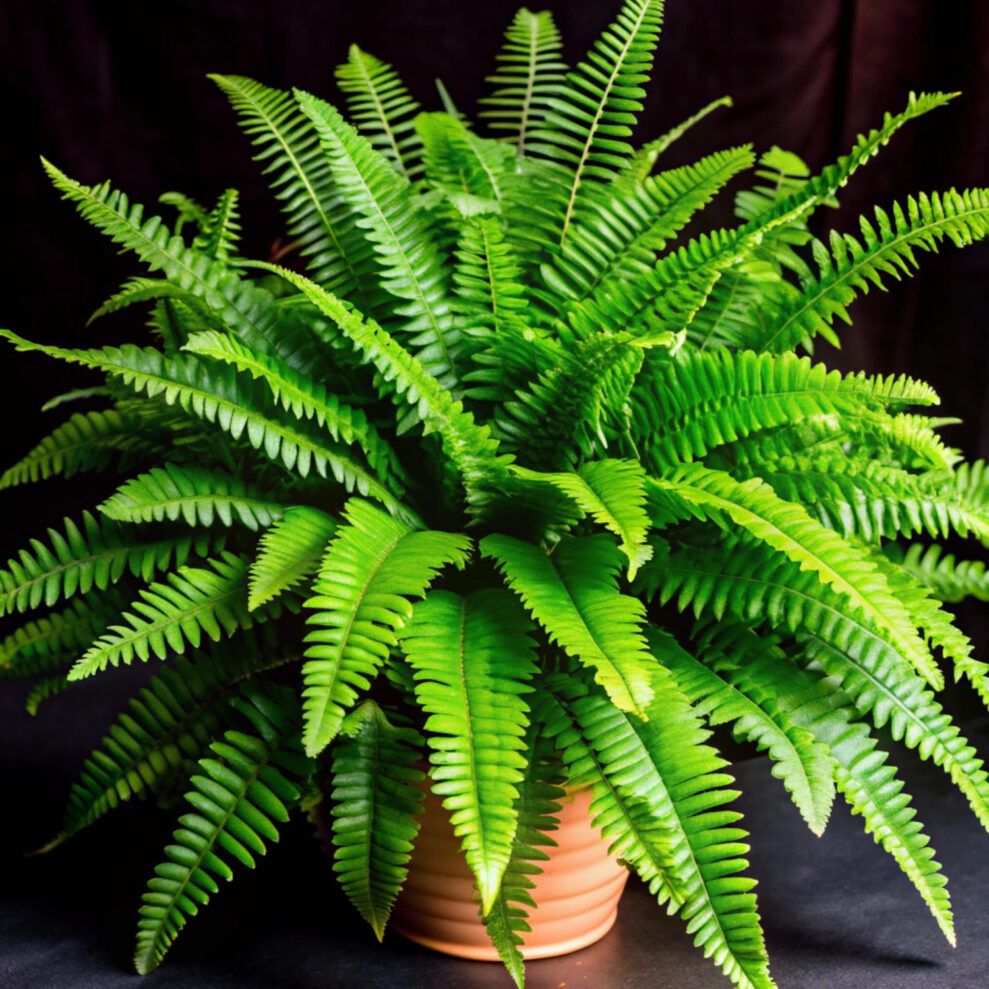
-
Maidenhair Fern (Adiantum spp.)
Maidenhair ferns are delicate and graceful plants with fan-shaped leaflets on wiry stems. They prefer bright, indirect light and consistently moist soil. These ferns are particularly sensitive to low humidity, so regular misting or a humidifier is essential. Avoid placing them in areas with drafts or fluctuating temperatures.
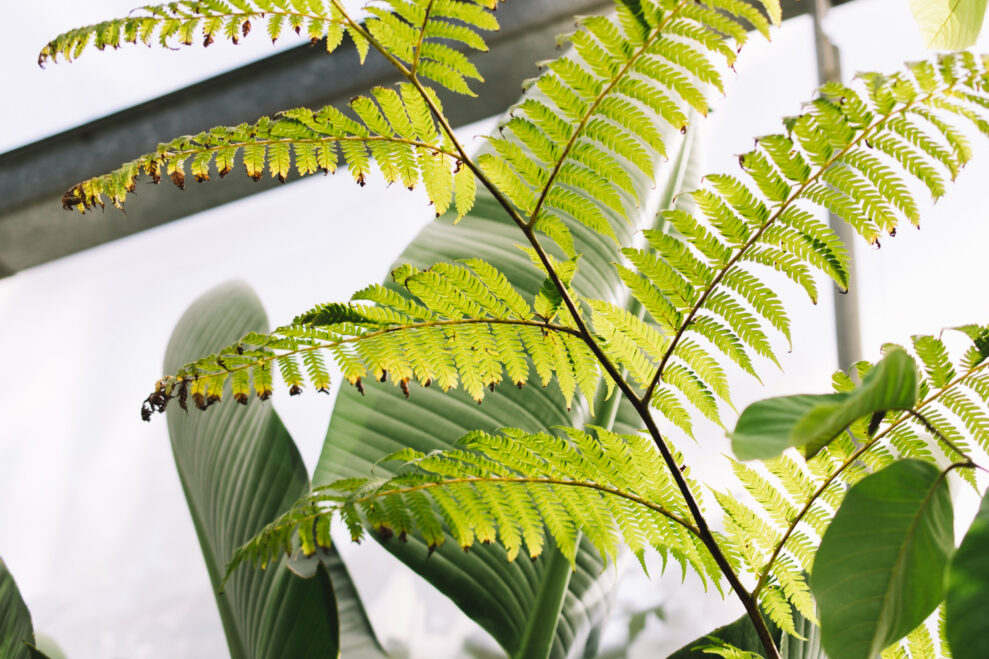
-
Staghorn Fern (Platycerium spp.)
The staghorn fern is an epiphytic variety known for its dramatic, antler-like fronds. It grows well mounted on a wooden board or in a hanging basket with a well-draining, coarse potting mix. Provide bright, indirect light and water by soaking the root ball or moss backing once a week. Mist the fronds between soakings to maintain humidity.
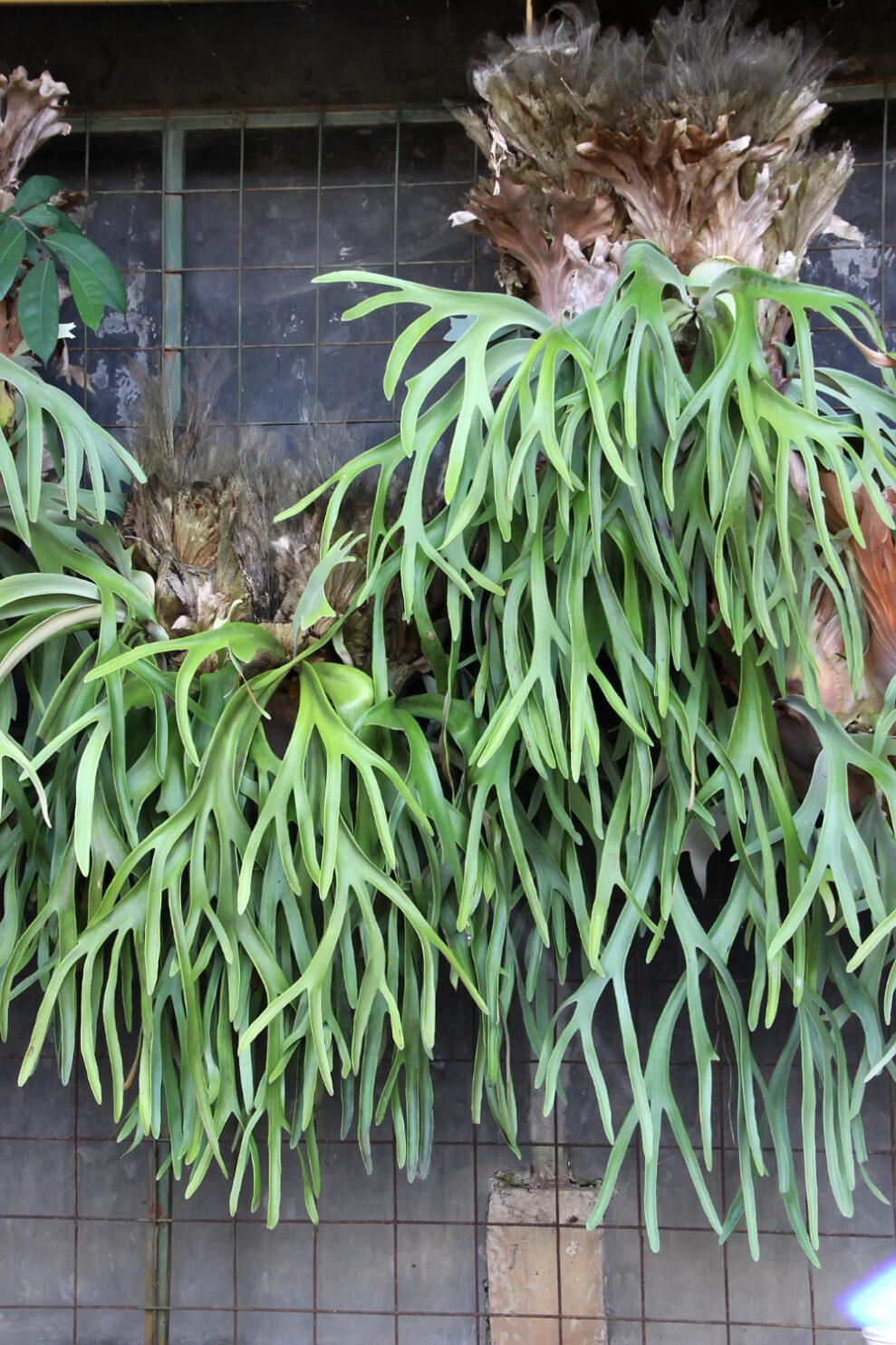
-
Bird’s Nest Fern (Asplenium nidus)
This fern has large, undivided fronds that resemble a bird’s nest. It prefers low to medium light levels, making it suitable for indoor spaces with limited natural light. Keep the soil consistently moist but avoid letting water sit in the center of the plant, as this can cause rot. Provide ample humidity by misting or using a pebble tray.
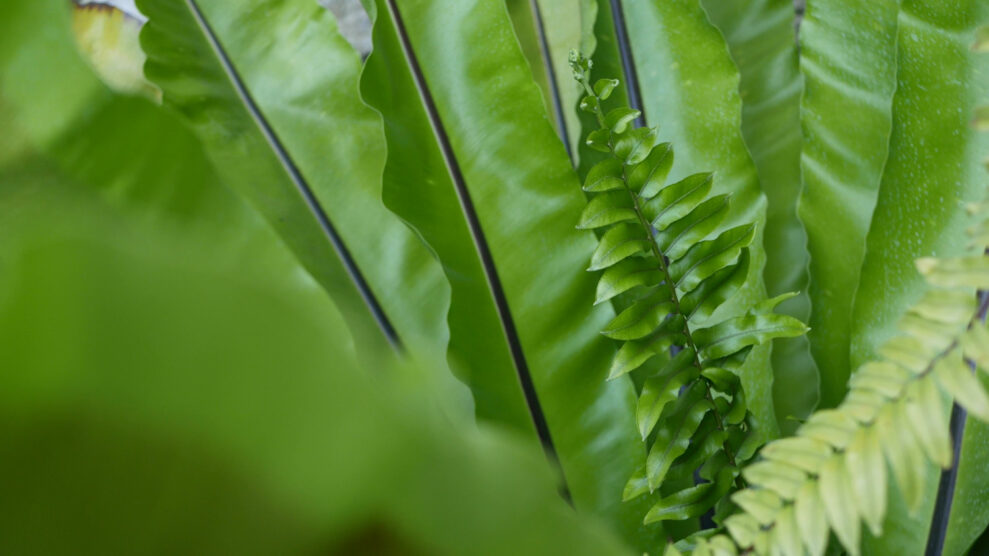
-
Rabbit’s Foot Fern (Davallia fejeensis)
The rabbit’s foot fern is characterized by its furry, creeping rhizomes and lacy fronds. It prefers bright, indirect light and well-draining soil. Keep the soil evenly moist, taking care not to overwater or allow the rhizomes to dry out. Maintain humidity by misting the plant or placing it near a water source.
-
Ostrich Fern (Matteuccia struthiopteris)
This hardy, outdoor fern is named for its large, upright fronds resembling ostrich feathers. It thrives in part to full shade and prefers consistently moist, rich soil. Ostrich ferns can spread aggressively, so planting them in a designated area or container is recommended. Mulch around the plant to retain moisture and protect the roots during winter. -
Sword Fern (Polystichum munitum)
Sword ferns are robust plants with dark green, leathery fronds. They can be grown both indoors and outdoors, in bright, indirect light or dappled shade. They prefer well-draining, rich soil and consistent moisture. Sword ferns are relatively low-maintenance and can tolerate occasional neglect, making them an excellent choice for beginner gardeners.
Each fern variety has specific care requirements, but they generally thrive in similar conditions: bright, indirect light, consistently moist soil, and high humidity. By understanding the unique needs of your chosen fern species, you can provide the optimal environment for healthy, vibrant growth.
Ferns are versatile, ancient plants that bring life and beauty to any space. By understanding their specific needs and providing proper care, you can successfully grow and enjoy these captivating plants for years to come.
